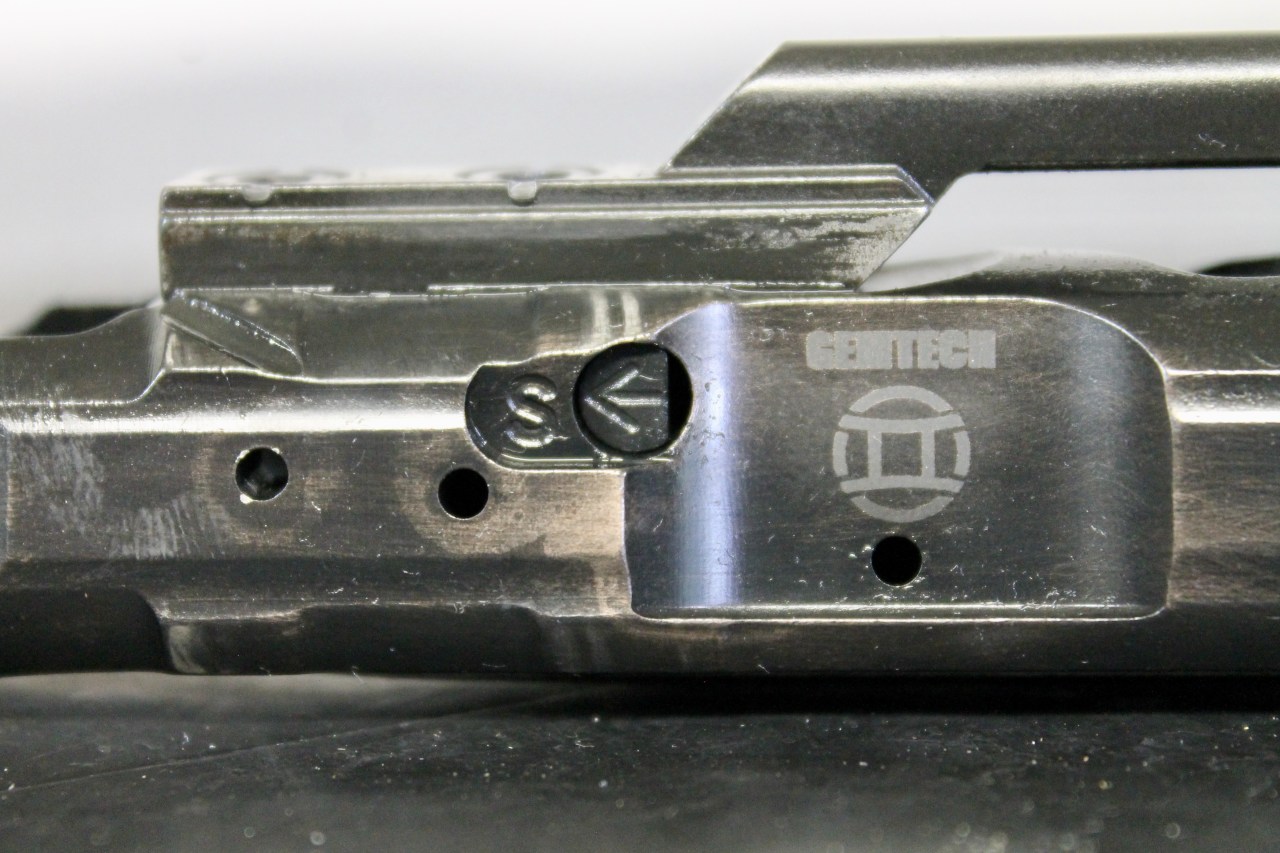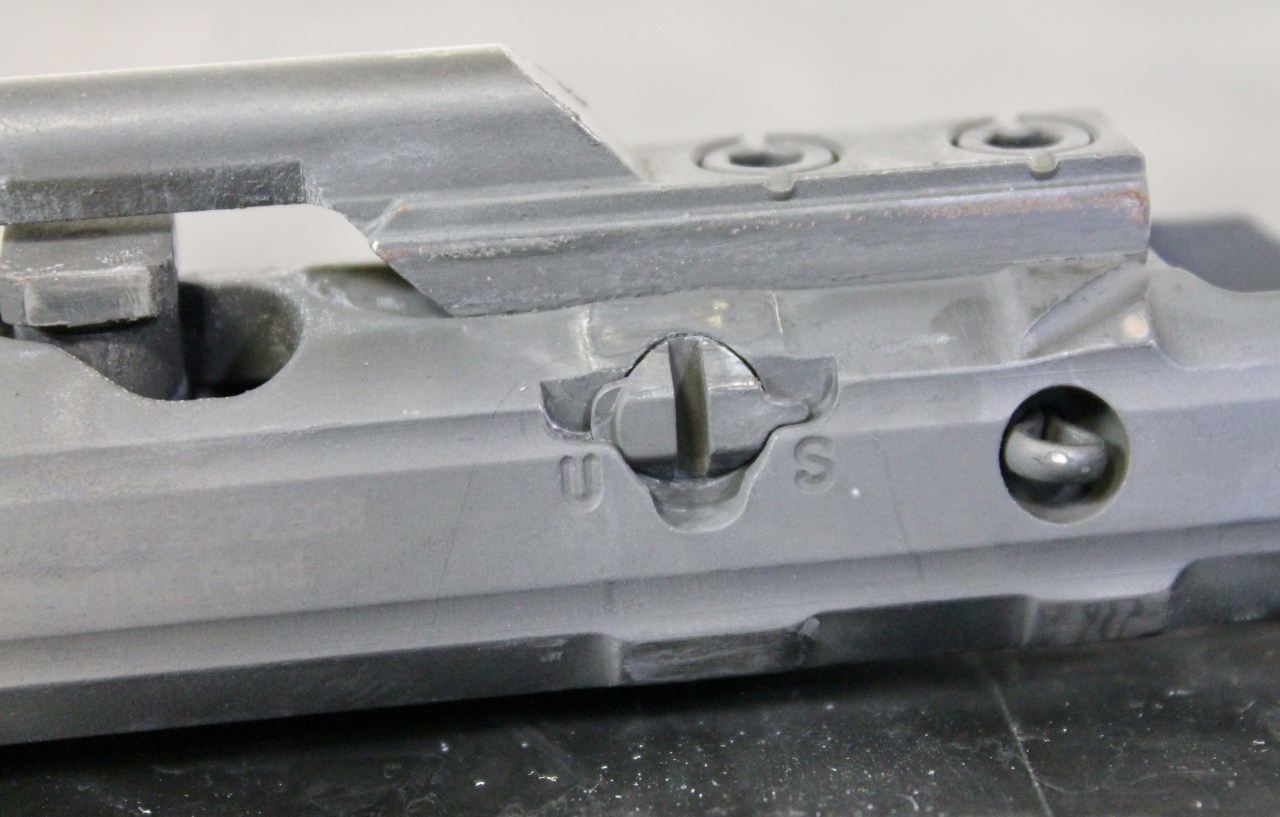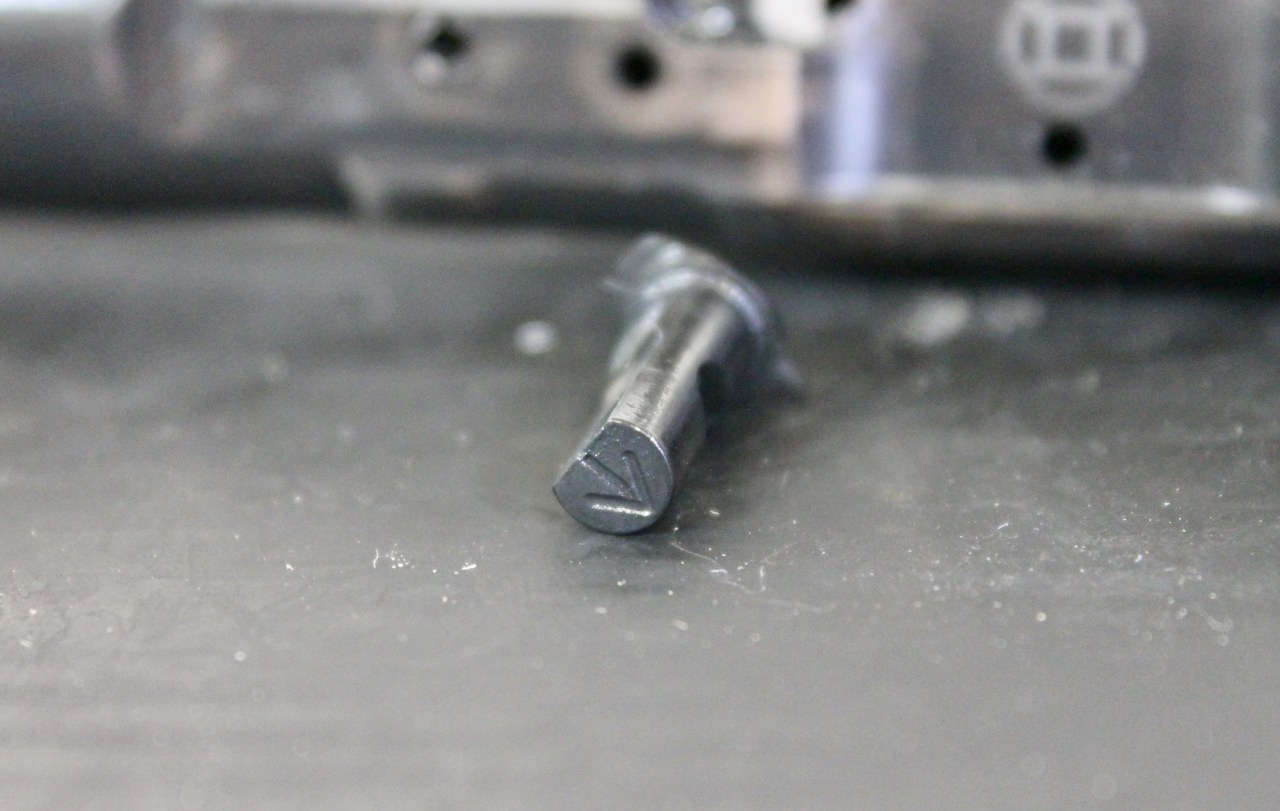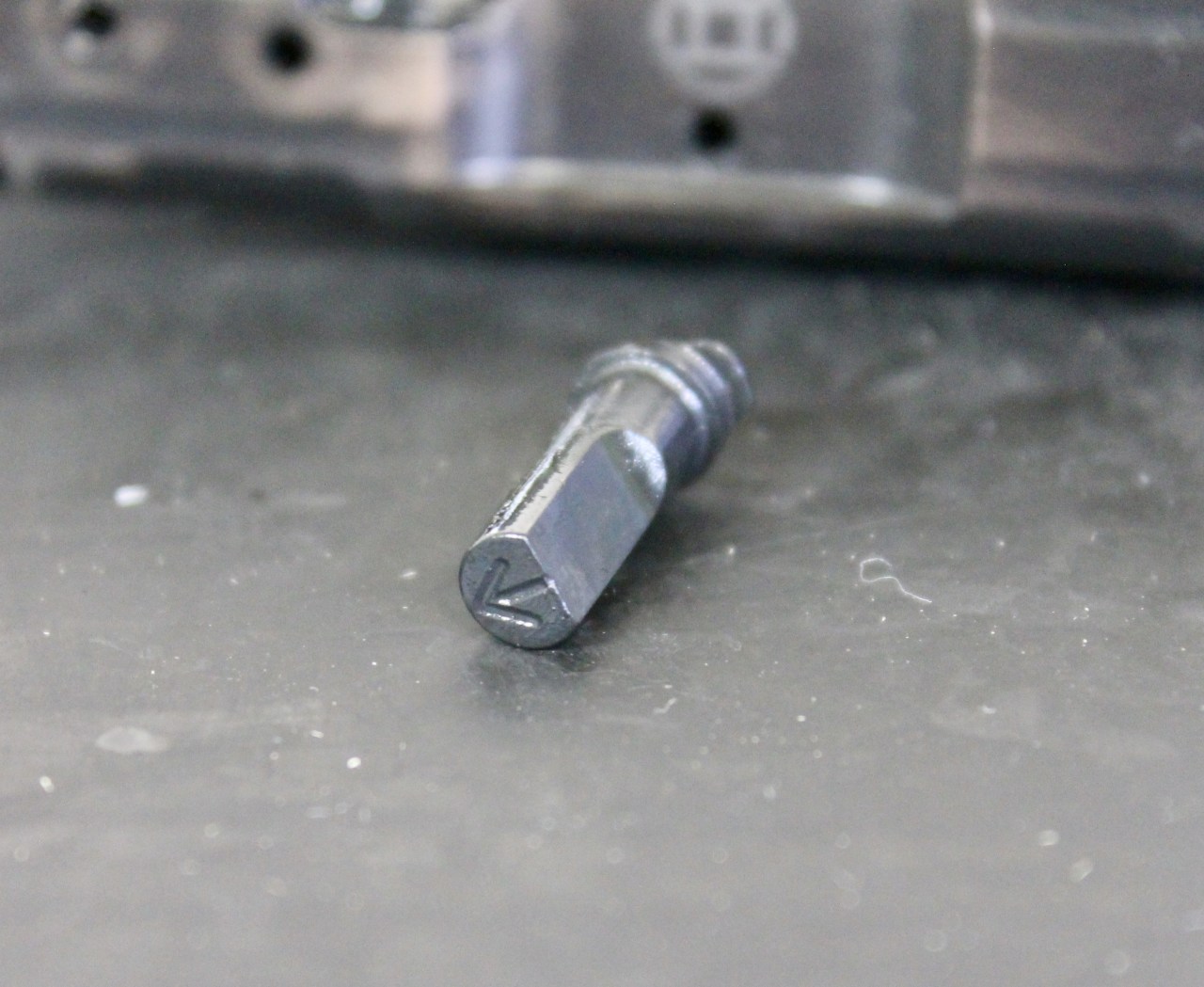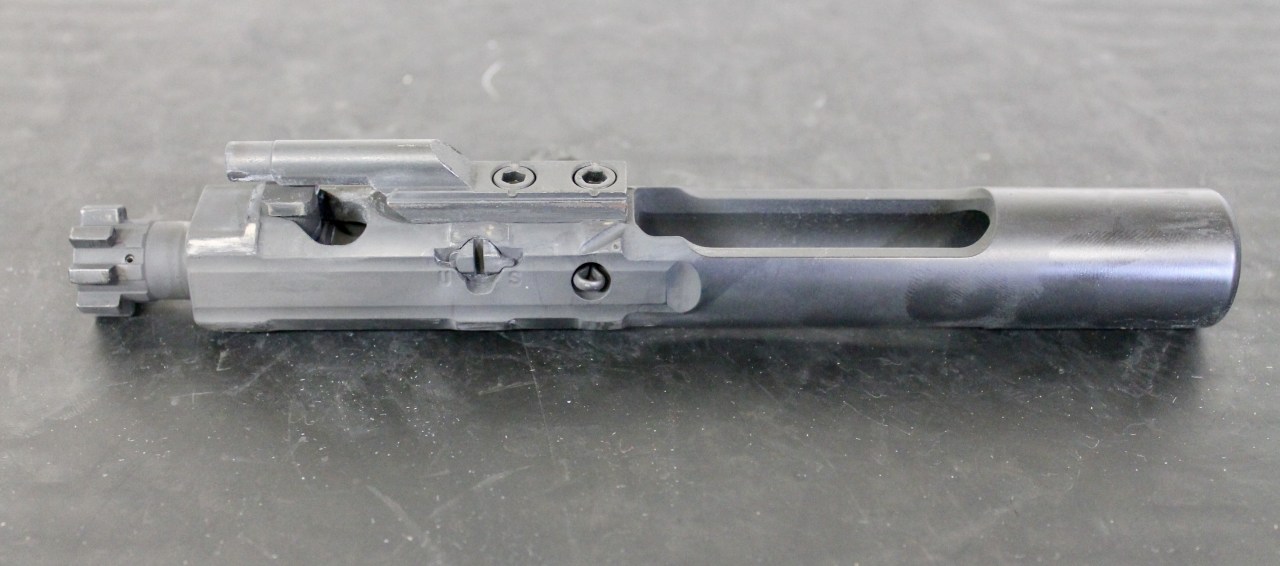Gemtech Suppressed Bolt Carrier Review
The unfortunate reality that faces many silencer owners is that their AR-15 pistols and rifles are not designed or built to complement a silencer screwed to the muzzle. The reason for this is simple. The AR-15 is a gas operated rifle that relies on a portion of the expanding gases produced during the firing of a round to cycle the action. Adding a silencer to the muzzle creates extra back pressure that goes above and beyond the original design consideration - a situation referred to as "overgassed"
The majority of the rifles currently available on the consumer market are designed to function reliably and safely without a silencer. Depending on the rifle, the silencer, and the ammunition used, you can reasonably expect that adding a silencer to the end of the gun will result in quite a bit more gas escaping around the charging handle - right next to your face - which is neither fun or comfortable. If you've ever shot an overgassed rifle, you already know how it can quickly sap the joy from a day at the range.
Furthermore, this vigorous cycling of the action has the potential to disrupt your sight alignment, meaning you'll have to fight the gun a bit to get back on target for follow up shots. A standard bolt carrier group weighs somewhere in the neighborhood of 10-11 oz. That's a bit more than a half pound of metal moving (quickly) back and forth in the upper receiver. If a swift kick from an overgassed rifle has that bolt moving faster/harder than it should, the result is a bolt that slams into the back of the buffer tube with authority. Similar to your friend giving you a shove on the shoulder, this upsets the shooting position you've worked so hard to build. Look at a competitive rifle on the 3 gun circuit, and you'll see a gun that's been tuned so that the bolt moves only as much as it needs to.
Beyond the obvious comfort and "shootability" issues of an overgassed rifle, an eye must be kept on long term reliablity. Overgassing can wreak havoc on the internal components of today's modern sporting rifles. Those internal components are moving faster than they were designed to move, and something eventually must break down.
There are two ways to deal with overgassing in an AR-15. The first is to restrict the flow of gas. The second is to vent the excess gas to the atmosphere. There are several ways to accomplish this, but the majority of solutions center around some sort of adjustable gas block. These take several forms. The first form allows you to dial back the amount of gas coming through the system so that only the minimum amount of gas necessary is cycling the action. The second form vents the excess gas to the atmosphere. In the case of this test, I used a hybrid gas block from Superlative that's capable of both.
The problem with using an adjustable gas block in tandem with a silencer comes when you want to remove your can. If you tuned the gas system with the backpressure of a silencer, removing it will turn your AR-15 into a single shot rifle as there will not be enough gas pressure to cycle the system. Similarly, if you tuned the rifle without a silencer, screwing a can to the end will give you an slightly less overgassed rifle than you would have with a standard gas block.
If you want the best of both worlds, you can purchase something like the Noveske Switchblock or a complete PWS MK1 MOD 2. The Switchblock uses a two position gas adjustment while the PWS rifle uses a three position style system. The downside there is that the Switchblock cannot be covered by a hand guard, and the PWS option requires that you buy a complete upper or rifle.
Gemtech has another option for you to consider - the Suppressed Bolt Carrier.
As the name would imply, Gemtech's option is a full replacement for the bolt carrier in your rifle. Sold as a standalone unit, it requires a complete bolt, firing pin, and associated pins. At a cost of $225 through Capitol Armory, it isn't the cheapest thing in the catalog, but your money does get you a nitrided bolt with a cool trick up its sleeve - the ability to switch between suppressed and unsuppressed settings.
In the Unsuppressed setting, the Gemtech bolt operates like any other. Swap the little lever over to the "S" position for Suppressed, and it vents a metered amount of excess gas out of the ejection port - away from your face.
In theory and on paper, this allows you to bleed off that excess gas while keeping your gas block, adjustable or otherwise, hidden under a hand guard. It also provides a (nearly) idiot proof method to ensure that the rifle is using the proper gas position. Yes, you'll have to pull the bolt to change settings, but you certainly won't do that by accident.
I set out to test Gemtech's claims by taking a known good, tuned upper receiver to the range along with a registered full auto lower. Sidebar - any time that testing something requires a machine gun, I'm available. The upper in this case is one that I built at home using a PSA Upper, milspec bolt, Faxon 16" Pencil profile barrel with a mid length gas system. I had already tuned the Superlative gas block to one notch above "barely cycling" with PMC Bronze ammo, a historically weak choice in ammo.
I paired this upper with a Sig Sauer SRD 556 QD silencer and headed to the range along with my Competition Electronics Pocket Pro II Shot Timer, capable of recording split times. Paired with a machine gun, this gives me a view into how fast a gun is running. I chose to conserve ammunition and run thirty round PMags downloaded to fifteen rounds for the duration of my simple test. The test went as follows - shoot several magazines of ammo with the rifle unsuppressed and tuned for reliable but gentle function. Second, screw the SRD 556 to the end and record the split times. Then switch the Gemtech Bolt Carrier to the Suppressed setting and record the split times.
In the unsuppressed setting with a bare muzzle, my rifle produced fairly consistent split times from .08 to .10 seconds. The majority were either .08 or .09 with only a few at .10 seconds. That translates to a cyclic rate in the neighborhood of 600-750 RPM which is fairly slow for a machine gun - a testament to a properly tuned gas system.
Screwing the SRD 556 to the end pumped those numbers up to a very consistent split of .06-.07 which works out to be 850-1000 RPM. That is a marked uptick in speed, and one that can easily be picked out by sound alone. An overgassed machine gun just runs faster. Leaving the SRD 556 in place and switching the Gemtech bolt over to the "S" position resulted in split times that mirrored the unsuppressed split times of .08-09 seconds. That's in the 660 - 750 RPM range, and pretty much dead on with what I saw without a suppressor.
Switching the selector can be done with a stout fingernail or the tip of a bullet you're willing to sacrifice as it requires a bit of "oomph" once the bolt carrier is covered up in a good deal of carbon. That's easy to do when you're running a suppressor and dirty ammo. Because I carry a toolkit to the range, I used a flat bladed screwdriver, but field expedient solutions are possible.
I found the suppressed setting to be as comfortable as shooting a rifle without a silencer on the end. Gemtech's bolt carrier does a really great job of venting excess gasses out the ejection port and away from your face. Even on a machine gun, there was no nasty gas blowback. The Gemtech Suppressed Bolt Carrier is not a cheap date by any means coming in about $75 more than complete nitrided bolt carrier groups. Keep in mind that you'll still need to pick up a bolt and the various bits that go along with it to make a functioning carrier group. For me, the added functionality and decreased wear and tear on my rifle is worth it.
Pair this up with an adjustable gas block, and you have the ability to ensure that your rifle is running with the minimum amount of gas necessary in either suppressed or unsuppressed configurations. Get one for your AR-15 or AR-10 now: http://www.capitolarmory.com/gemtech-suppressed-bo... .

